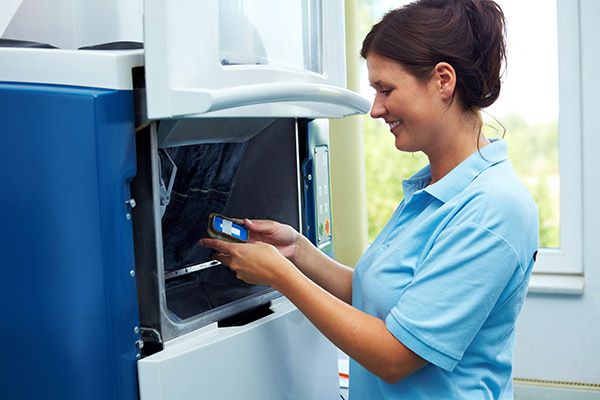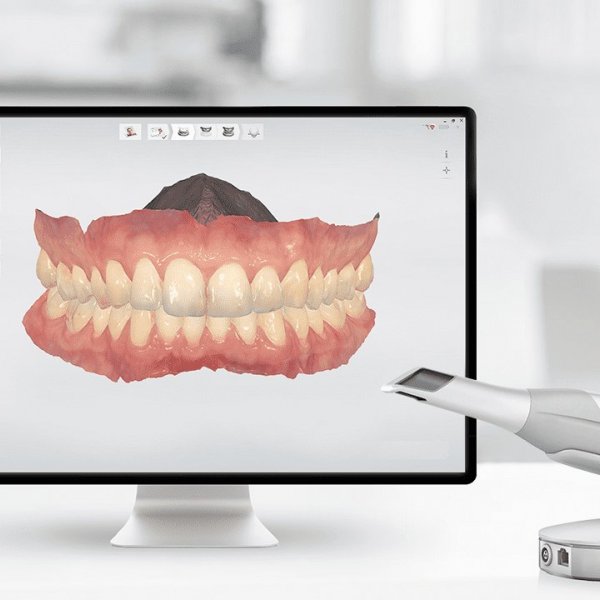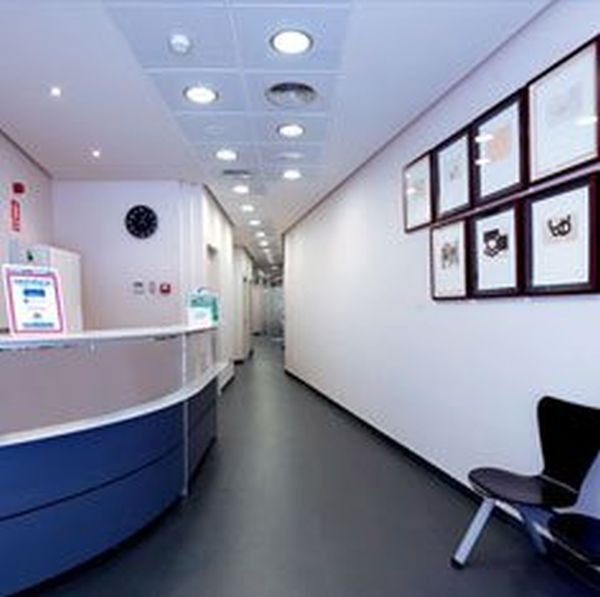What is dental CAD-CAM?

Through this digital technology we are in a position to design and manufacture extremely precise dental restorations of the highest quality. These characteristics allow us to greatly reduce the margin of human error to achieve even higher success rates in treatments that require artificial parts.
At the Casanova 25 dental clinic We use cad cam technology to manufacture porcelain veneers, dental prostheses, implant prostheses and other restorative treatments. This fabrication is made from a three-dimensional digital reproduction of the mouth, thus achieving a better adjustment of the prosthetic rehabilitations.
In addition, the CAD CAM system provides many other advantages: reduction in the number and surgical times, surgery without incision, greater surgical accuracy, less inflammation and allows us to have the teeth manufactured on future implants even before the intervention. The CAD (Computer Aided Design) CAM (Computer Assisted Manufacturing) technology is the most innovative technique available in fixed prostheses and represents a very important advance in relation to conventional dentistry.
With this digital technology models of the patient's mouth are scanned and restorations processed and manufactured by computer-assisted machining. This gives us great precision in the diagnosis and preparation, in addition to allowing us to simulate the surgery we are going to use in the selected area.
Cad cad dental technology consists of three processes:
- The scan of the tooth or dental implant in the model.
- The computer design of the aesthetic prosthesis using three-dimensional software (which allows calculating the axes of insertion, having reference to the antagonist model, drawing a line in the cervical margin and increases of 500%).
- And the robotic milling or manufacture of the pieces, from the information of the design of the prosthesis in a few minutes.


